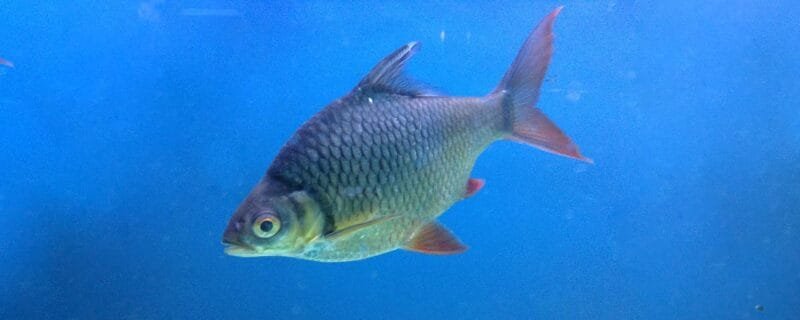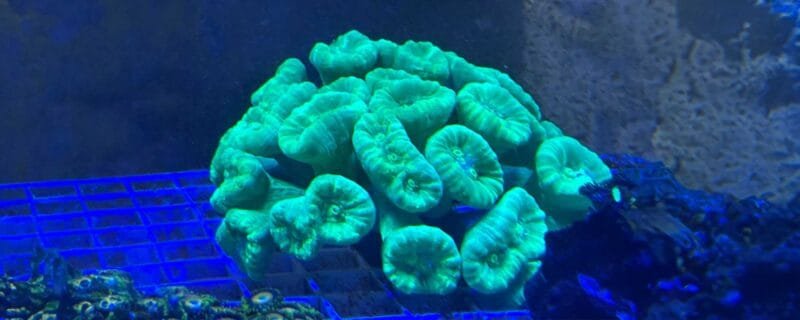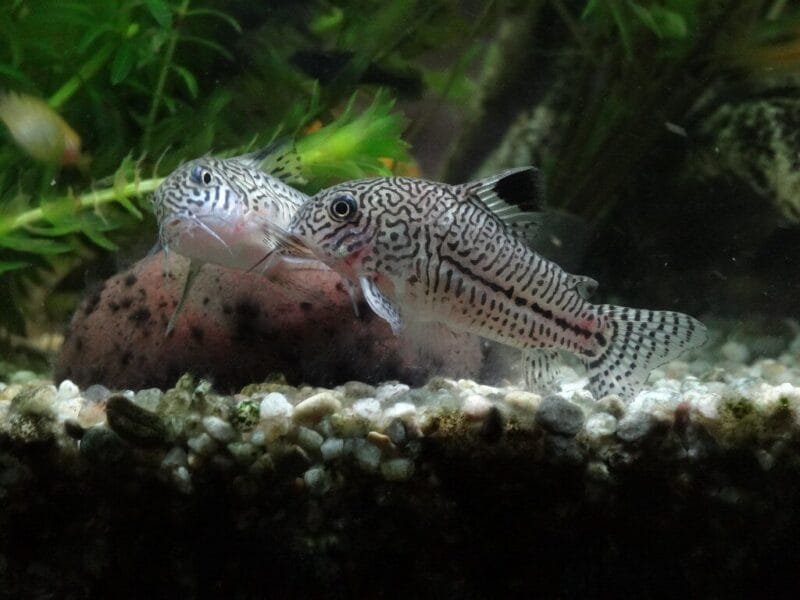The Common Dace (Leuciscus leuciscus), a graceful freshwater species from the Cyprinidae family, is a favorite among aquarists who enjoy keeping schooling fish in cold or temperate setups. This streamlined fish, known for its silvery sheen and active nature, can thrive in both natural ponds and well-maintained aquariums. In this guide, we’ll explore its natural habitat, diet, care needs, and ideal companions, as well as the unique characteristics of its albino variation.
Native Range and Habitat
The Common Dace is native to Europe and parts of western Asia, inhabiting clean, well-oxygenated rivers and streams. It thrives in flowing waters with gravelly or sandy bottoms and is often found alongside species like the Common Roach and European Chub. In the wild, dace schools are a familiar sight in shallow, fast-moving waters where they dart about energetically in search of food.
Appearance and Size
The Common Dace has a slender, torpedo-shaped body covered in shiny silver scales with bluish or greenish reflections along the back. The fins are typically transparent or lightly tinted. Adult dace grow to an average of 15–20 cm (6–8 inches), though some can reach up to 30 cm (12 inches) in larger waterways. In aquariums, they rarely exceed 18 cm, maintaining a compact and elegant profile ideal for medium-sized tanks.
Diet and Feeding
In their natural habitat, dace feed on a varied omnivorous diet of insects, larvae, worms, small crustaceans, and plant material. In captivity, they readily accept high-quality flake foods, pellets, and live or frozen treats such as bloodworms and brine shrimp. Supplementing their diet with blanched vegetables or spirulina-based flakes helps maintain health and coloration.
Behavior and Temperament
Dace are schooling fish that thrive in groups of six or more. Their constant movement and flashing silvery bodies make them fascinating to observe. They are peaceful and non-aggressive, making them excellent candidates for community aquariums, particularly those designed to mimic cool, flowing river systems. Their active nature also means they appreciate plenty of swimming space and strong water currents.
Sexing
Sexing Common Dace can be challenging outside of the breeding season. Males are typically slimmer with slightly brighter coloration, especially during spawning when they develop small white tubercles (breeding stars) on their heads. Females are generally rounder-bodied, particularly when carrying eggs.
Breeding
Breeding Common Dace in captivity is possible but not common. In the wild, they spawn in spring when water temperatures rise to around 10–15°C (50–59°F). They migrate to shallow gravel areas where females scatter thousands of sticky eggs that adhere to stones or vegetation. There is no parental care; the eggs hatch in about a week. For aquarists attempting to breed them, a dedicated breeding tank with cooler, well-oxygenated water and fine gravel is ideal. Once eggs are laid, adults should be removed to prevent predation.
Water Conditions
Being a coldwater species, the Common Dace prefers cooler, well-oxygenated water. Ideal parameters include:
- Temperature: 10–20°C (50–68°F)
- pH: 6.5–8.0
- Hardness: 5–15 dGH
- Flow: Moderate to strong
Regular water changes and good filtration are essential, especially if housed with other active species. A canister filter or powerhead is recommended to maintain oxygen levels and replicate their natural riverine environment. See our guide on Choosing the Right Filter for Your Aquarium for more details.
Ease of Care
Common Dace are relatively hardy, provided they are kept in suitable conditions. They do not tolerate warm, stagnant water and should not be housed in tropical setups. Their care level is considered moderate — ideal for aquarists with some experience in maintaining coldwater or river-type aquariums.
Tankmates and Compatibility
The Common Dace is peaceful and social, making it a good choice for community tanks with other coolwater fish. Compatible tankmates include:
- Goldfish
- Weather Loaches
- Tench
- Common Carp
- Rosy Barbs or other temperate water cyprinids
They should not be kept with overly aggressive or predatory species. Since dace are fast swimmers, ensure tankmates can tolerate brisk water flow and cooler temperatures.
Species Variations
While the Common Dace itself is fairly uniform in appearance, regional variations in color and size exist depending on environmental factors. There are also hybrid forms with related species, such as roach-dace hybrids, found in shared habitats.
The Albino Common Dace
The Albino Dace is a rare but striking variant featuring a pale pinkish-white body with translucent fins and red eyes. These fish are sometimes seen in ornamental ponds or aquaria. They share identical care requirements with their wild-type counterparts but may be more sensitive to bright lighting. Providing shaded areas or subdued lighting will help reduce stress and display their unique coloration beautifully.
Similar Species and Relatives
Common Dace belong to the same family as other popular freshwater cyprinids such as the Zebra Danio and Gold Barb. All share an affinity for cool, oxygen-rich water and active schooling behavior. Understanding the family traits can help aquarists design harmonious, naturalistic tanks featuring multiple related species.
FAQs About the Common Dace
1. Can Common Dace live in a tropical aquarium?
No. Common Dace require cooler temperatures between 10–20°C. Prolonged exposure to warmer water can cause stress, oxygen deprivation, and illness.
2. How large should their tank be?
A group of six dace should be kept in a tank of at least 200 liters (55 gallons). The key is providing open swimming space and strong water movement.
3. Are Common Dace suitable for garden ponds?
Yes. They do very well in outdoor ponds with good aeration and a steady flow. However, ponds should be deep enough to avoid freezing in winter.
Conclusion
The Common Dace (Leuciscus leuciscus) is a spirited and attractive addition to coldwater aquariums and ponds. Its lively schooling behavior, peaceful temperament, and shimmering appearance make it a favorite among aquarists who appreciate natural, flowing setups. With proper care, cool water, and companionship, the Common Dace thrives as a resilient and visually striking member of any freshwater collection.







